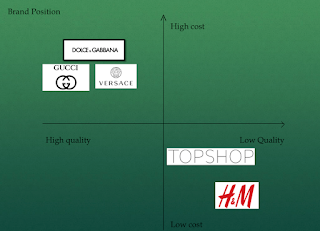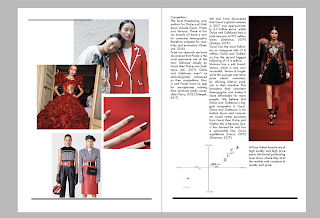Collaborations/ Exclusivity
Links:
http://academic.mintel.com/display/754871/?highlight#hit1
http://academic.mintel.com/display/754864/?highlight#hit1
Collaborations:
Collaborations between designers and high street brands are a way of appealing to fashion-conscious younger shoppers with less disposable income. Among the designers that have helped make luxury fashion more accessible to a wider audience are Alexander Wang and Balmain’s Oliver Rousteing, which have both been open to collaborations with high street retailer H&M. They have created more affordable versions of their catwalk collections for young customers, helping to get their names recognised among fashion-conscious shoppers. At the same time, London Fashion Week has seen designers experimenting more than ever with the latest technology and using social media in an innovative way to engage a wider audience. For example, Burberry previewed its key catwalk looks for spring/summer 2015 on Snapchat.
Exclusivity:
Part of the appeal of designer brands is that they are not mass market items available to everyone and 57% of women agree that seeing too many people wearing the same brand makes it less exclusive. It is therefore important for luxury brands to broaden their customer base without becoming too accessible. One way of doing this is to adapt the focus of luxury so that it is about the desirable experience, rather than just the product. Luxury brands need to ensure that they raise the bar on all fronts and excel in customer service, personal shopping, style advice, as well as online in order to provide the designer shopper with a unique and unforgettable brand experience.
Technological:
Compared with other generations, Millennials are the most likely to interact with fashion companies and brands online. This highlights how imperative it is for designer brands to invest in the digital arena in order to build stronger relationships with customers that will engage and excite them, as well as foster long-term loyalty. Luxury houses need to find ways to integrate digital technology as part of the evolution of the whole brand experience. For example, designer brands, Karl Lagerfeld, Armani and Longchamp located on Regent Street, have all signed up to the Crown Estate app, which allows the brands to deliver personalised marketing messages to shoppers as they walk by. The app also builds a profile for each shopper so that the content they receive is tailored to their individual preferences.
http://academic.mintel.com/display/754871/?highlight#hit1
http://academic.mintel.com/display/754864/?highlight#hit1
Collaborations:
Collaborations between designers and high street brands are a way of appealing to fashion-conscious younger shoppers with less disposable income. Among the designers that have helped make luxury fashion more accessible to a wider audience are Alexander Wang and Balmain’s Oliver Rousteing, which have both been open to collaborations with high street retailer H&M. They have created more affordable versions of their catwalk collections for young customers, helping to get their names recognised among fashion-conscious shoppers. At the same time, London Fashion Week has seen designers experimenting more than ever with the latest technology and using social media in an innovative way to engage a wider audience. For example, Burberry previewed its key catwalk looks for spring/summer 2015 on Snapchat.
Exclusivity:
Part of the appeal of designer brands is that they are not mass market items available to everyone and 57% of women agree that seeing too many people wearing the same brand makes it less exclusive. It is therefore important for luxury brands to broaden their customer base without becoming too accessible. One way of doing this is to adapt the focus of luxury so that it is about the desirable experience, rather than just the product. Luxury brands need to ensure that they raise the bar on all fronts and excel in customer service, personal shopping, style advice, as well as online in order to provide the designer shopper with a unique and unforgettable brand experience.
Technological:
Compared with other generations, Millennials are the most likely to interact with fashion companies and brands online. This highlights how imperative it is for designer brands to invest in the digital arena in order to build stronger relationships with customers that will engage and excite them, as well as foster long-term loyalty. Luxury houses need to find ways to integrate digital technology as part of the evolution of the whole brand experience. For example, designer brands, Karl Lagerfeld, Armani and Longchamp located on Regent Street, have all signed up to the Crown Estate app, which allows the brands to deliver personalised marketing messages to shoppers as they walk by. The app also builds a profile for each shopper so that the content they receive is tailored to their individual preferences.



Comments
Post a Comment